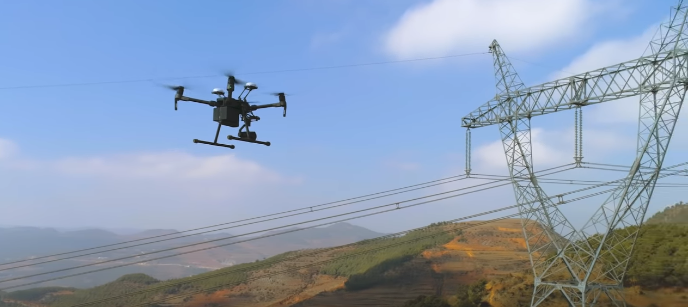The Zimbabwe Electricity Supply Authority (ZESA) is now legally able to incorporate drones in its infrastructure management. This announcement was made at an event the national power company held to mark its acquisition of a Remotely Piloted Aircraft Operator’s Certificate (ROC).
What is an ROC and why does ZESA need it to fly drones?
An ROC is a certification given to an institution that wants to use drones for any of its operations by the Civil Aviation Authority of Zimbabwe (CAAZ). The requirement is stated in Statutory Instrument 271 of 2018 and says:
No remotely piloted aircraft operator shall operate a remotely piloted aircraft in terms of these regulations unless such person is the holder of—
in the case of commercial, corporate and non-profit operations, a valid remotely piloted aircraft operator’s Certificate (ROC) and the Operations Specifications attached thereto;
in the case of only commercial operations, an Air Services Permit issued in terms of the Civil Aviation Act [Chapter 13:16].
So essentially it’s not enough for an organisation to have licenced drone pilots because if they are working under a company’s banner, that firm will need to be certified to run any drone airborne operations. From what we understand the process to get an ROC from the CAAZ is pretty rigorous. The national aviation authority will need to assess the capabilities, equipment and infrastructure an applicant has and/or make recommendations on what is needed in order to get the ROC.
Does this mean that faults are going to be less frequent?
This isn’t an easy question to answer because ZESA transmission and electricity generation equipment is in various stages of disrepair. Saying that drones will be the silver bullet would be incorrect because a lot of work needs to be done in other areas.
However what unmanned aerial vehicles offer cannot be ignored because ZESA will be able to save hundreds of thousands of dollars in electricity line surveying with the use of drones. What this means is that ZESA will be able to assess its lines remotely using fixed-wing drones that can travel for hundreds of kilometres and take images of power infrastructure in remote locations.
This will also mean that ZESA will only send out personnel when they are sure where the fault has taken place if the line or installation is above ground. Additionally, when ZESA technicians arrive on-site they will be able to survey lines with smaller drones. Technicians will be able to assess the situation from a safe distance and determine how to approach a situation with the knowledge that will help reduce accidents and mishaps.
Moreover, drones also allow ZESA to be able to access difficult terrain if they are scouting a location, which saves the fuel and man-hours of having to drive out to there.
On the renewable energy front, IPPs will be able to enlist ZESA to inspect their solar farms a lot faster and more efficiently than a single person can. According to drone manufacturer Yuneec, unmanned aerial systems can inspect more than 4,000 solar panels per hour. In stark contrast, a single technician can inspect roughly 60 panels per hour.
With drones, ZESA will amass valuable data on all of its transmission and generation equipment, which will hopefully result in the higher-ups making more informed decisions quicker.
Last but not least, ZESA will now be able to track the progress of work happening remotely if they so choose and gain perspective on projects that previously required a helicopter.
Does ZESA have any licenced drone pilots?
An ROC would be useless if ZESA didn’t have any licenced drone pilots or knew of any companies to contract for those services. From what we understand, ZESA has been taking its staff to be trained for the Remote Pilot’s Licence at the locally-based training school, Drone Solutions Academy. The school was one of two that ZESA visited last year when it was looking for places where its technicians could be upskilled.
Read: ZESA serious about drones; parastatal tours another local startup
Are faults going to be a thing of the past?
As I alluded to earlier, we shouldn’t get excited. ZESA’s drone program appears to be in its infancy and it will take some time till we see the effects of this. But it is encouraging to see that ZESA has taken this bold step and we will be eagerly awaiting the first demonstrations of drones in the field.
Also check out: Does ZESA have a business model problem?
Last week I was joined by Norman Moyo, the CEO of Distributed Power Africa (DPA), the Econet Group Subsidiary that Strive Masiyiwa said would be bigger than Liquid and Econet Wireless. In that conversation, Norman touched on a very interesting point about ZESA’s maybe looking to lean on the embarrassment of riches it has with distribution infrastructure and monetise that, to start the road to profitability. You can listen to download that episode of Technikari with the player below or access it with the link here.

What’s your take?